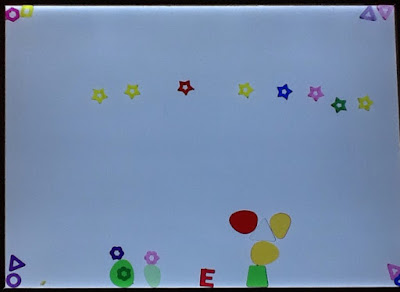Recently, my class was offered a prize for being the class with the most students participating in the PTA fundraiser at our school. The prize wasn't specified, so I asked my students what they would like to do. Going on a field trip was one of the popular choices. I had been wanting to take my students to the local historical society for a tour, with hopes of generating enough interest to spark an inquiry into the past, so this worked out perfectly.
Never having been to the historical society myself, I wasn't sure what to expect. I knew, however, that two of our social studies standards involve learning about the past, so I thought it would be a good experience. A local resident, who has lived his entire life in the area, was our tour guide.
 |
| We took a quick photo before entering the historical society. |
 |
| A collection of old cameras was a favorite for one of my students. |
 |
| The students were amazed by the way people used to make phone calls. |
 |
| Many students were interested in the trains that used to run through town. |
 |
| Everyone recognized this old fashioned piece of medical equipment. |
 |
| Blackboard? What is a blackboard? |
 |
We were curious about the homemade kites made of newspaper.
Hmmmm...we might have to try to make one ourselves! |
 |
| The military uniforms were also popular with many students. |
 |
The students were only able to recognize one tool on the tool wall.
Can you guess what it was? |
 |
| It was difficult to imagine not having running water in houses. |
 |
| It was fun to see an actual ice box. At least, I thought so... |
 |
| The students spotted the jars of candy right away! |
 |
Our historical society is housed in a building that used to be a community
center of sorts. It even had its own movie theater. |
 |
| No one wanted to try out this hair dryer! |
It was an interesting and informative tour, but I am not sure the students were interested enough to want to learn more. It did provide a common experience, however, which is one of the first steps in developing an inquiry project.
Upon returning from the field trip, I asked the students what they found most interesting, and what they wondered after their visit. Here are a few of their thoughts:
- I wonder what the houses looked like back then.
- How did the people get all their eggs to town?
- What did the trains look like that ran through town?
- I wonder why the uniforms were made the way they were.
- How did they make kites out of newspaper?
- What did they use for money?
We also spent a great deal of time comparing and contrasting items we saw at the historical society to similar items in our current world.
I am going to let the topic sit for awhile while I share some historical fiction with the class, along with some journals and other artifacts I found while cleaning out my mother's house last winter. My hope is that this will generate more interest, but I am resigned to the possibility that it may not. After all, in true inquiry, we must follow the learners.








































